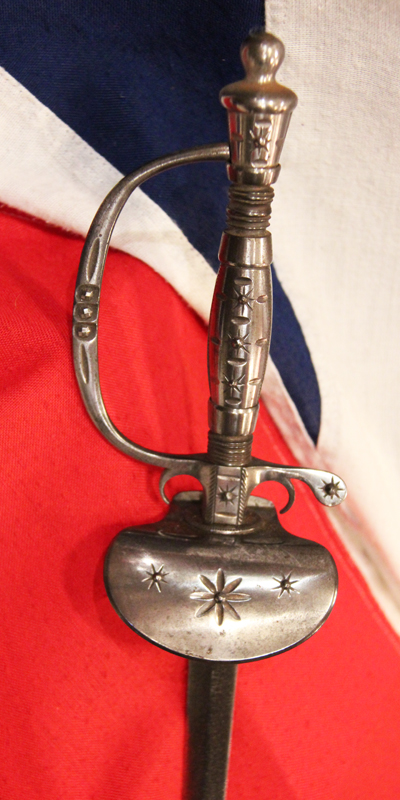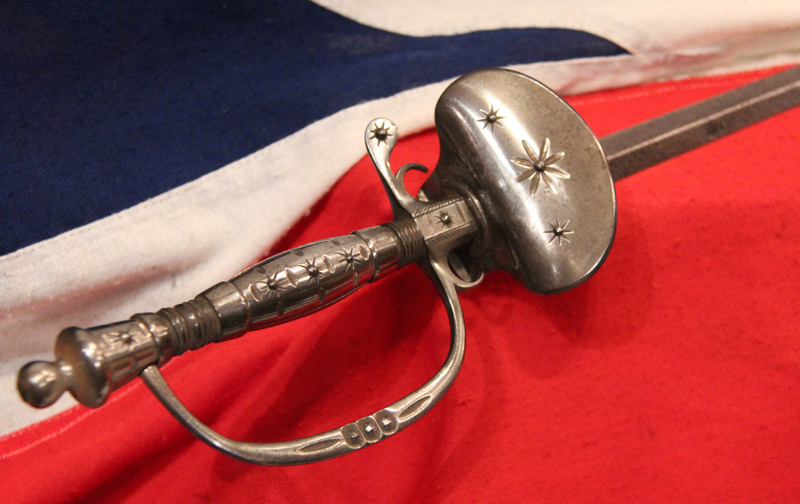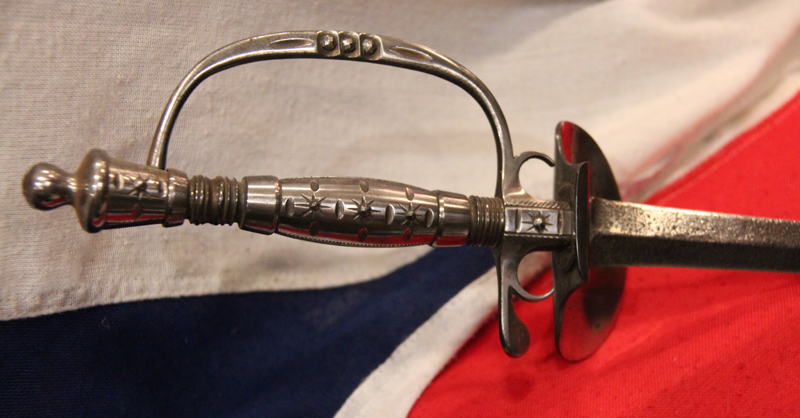A Very Good 19th Century, Early Victorian, English Cut Steel Small Sword
A most stylish, regency style, all steel hilt with cut steel so-called 'nail head' decor in engraved and chiselled star pattern form, double edged diamond shaped blade. The small sword or small sword is a light one-handed sword designed for thrusting which evolved out of the longer and heavier rapier of the late Renaissance. The height of the small sword's popularity was between mid 17th and late 18th century, and continued as de rigueur as the full court dress sword, when in the presence of the monarch, even to this day at the court of St. James. It is thought to have appeared in France and spread quickly across the rest of Europe. The small sword was the immediate predecessor of the French duelling sword (from which the epee developed) and its method of use as typified in the works of such authors as Sieur de Liancour, Domenico Angelo, Monsieur J. Olivier, and Monsieur L'Abbat developed into the techniques of the French classical school of fencing. Small swords were also used as status symbols and fashion accessories; for most of the 18th century anyone, civilian or military, with pretensions to gentlemanly status would have worn a small sword on a daily basis.
The small sword could be a highly effective duelling weapon, and some systems for the use of the bayonet were developed using the method of the small sword as their foundation; Alfred Hutton, an English officer of the King's Dragoon Guards, wrote extensively on self-defence techniques based on the short sword-bayonet. The very height of the small sword's widespread popularity was (as mentioned above) between the middle of the 17th and the late 18th century, when it was considered fashionable by aristocrats ("no gentleman was dressed without his sword" .
The Small sword was a thrusting-only weapon developed in France in the second half of the 17th century. The hilt consisted of a small shell- or disc-shaped guard much smaller than the hilt of the Renaissance rapier, and blade was relatively short and light, usually triangular or diamond-section, although double-edged flat small sword blades continued to be popular well into the 18th century. Old surface pitting to the blade, the hilt is blemish free.
Code: 21716





